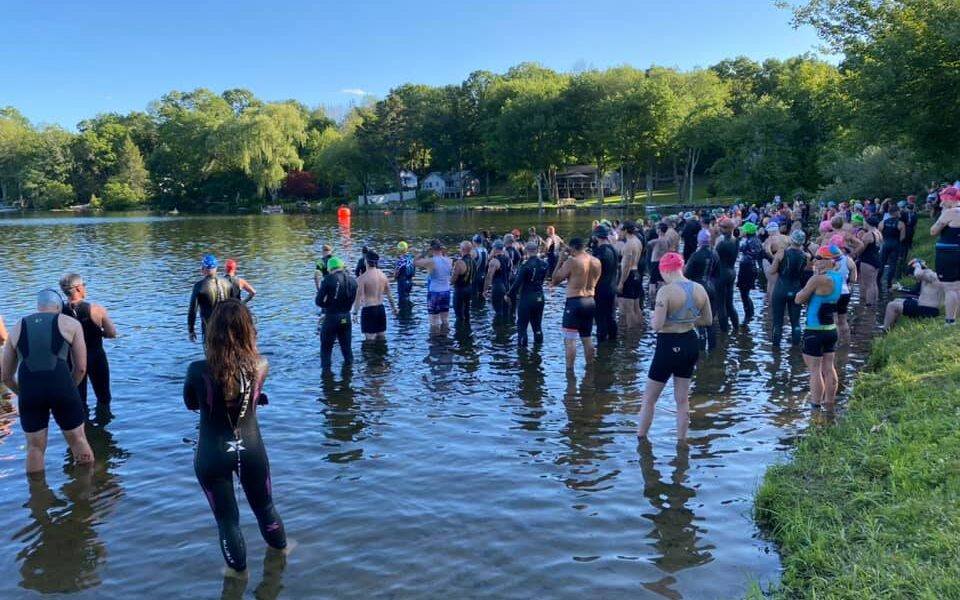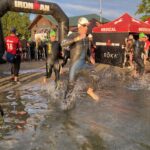For many of us in the United States racing is back in full force and open water swim season is upon us. Most triathletes love racing in wetsuits. Wetsuits provide and extra layer of buoyancy and a little protection from the elements. Wetsuits also provide an amplified benefit to athletes who do not have a strong background in swimming. For the most part, if a race is wetsuit legal then you want to race in a wetsuit, BUT there are some exceptions.
This year at Eagleman 70.3, the water was barely wetsuit legal (more likely than not officials worked really hard to find a spot of water that was cool enough when taking the official temperature). Because of the warm water temperatures coupled with warm air temperatures, there were many athletes who struggled with their wetsuits.
With that in mind here are some things to consider when making the decision of whether or not to wear a wetsuit.
Key Elements of Wearing a Wetsuit:
- Make sure it fits well and is put on correctly. A wetsuit that is too big will slow you down.
- Pull the arms and legs all the way up. If you don’t pull the wetsuit all the way up it will prevent correct mobility in the wetsuit and slow you down.
- TRY THE WETSUIT ON EFORE RACING! Swimming in a wetsuit feels different especially around the neck and chest so make sure you know how you are going to adjust your breathing and stroke.
- Swim in your wetsuit as often if you can. In a variety of temperatures. But remember chlorine is the enemy of wetsuits, so if you need to try a wetsuit out at the pool do so sparingly and make sure to rinse it really well once you get out of the water.
- Practice getting the wetsuit on and off. It takes time and patience to get the wetsuit on. If you wear a watch then figure out where you are going to wear your watch so it does not interfere with getting the wetsuit off.
When to Choose NOT to Wear a Wetsuit:
- If the water is on the verge of not being wetsuit legal there is a risk of overheating, especially if the air temperature is very warm. In this event, if you have a sleeveless I would choose that option. At Eagleman 70.3 in 2021 they kayak/paddle boarders ended up with an abundance of wetsuits that were discarded mid swim.
- If you have never swam with a wetsuit… that old saying nothing new on race day still holds.
- In a shorter race (likely with less than an 800 yard swim), where the time to take off the wetsuit is going to cost you more time then wearing it.
Open water swimming and wetsuit swimming is an area of opportunity for most athletes. The more that we put ourselves in situations where we can practice the more prepared we show up on race day.




